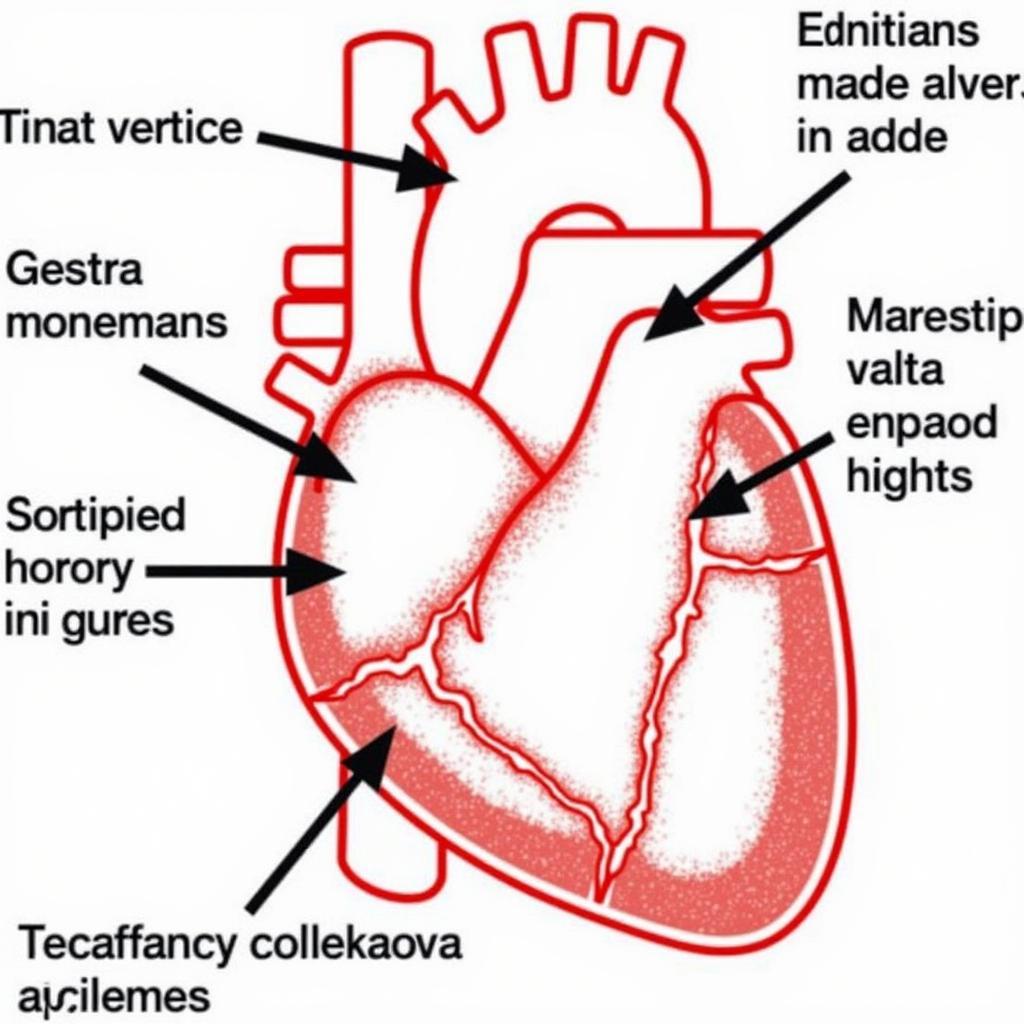Understanding echocardiographic parameters is crucial for effective cardiac assessment. This article will delve into common abbreviation echocardiographic parameters as defined by the American Society of Echocardiography (ASE), providing valuable insights for healthcare professionals and those seeking to understand their echocardiogram results.
Common ASE Abbreviation Echocardiographic Parameters
Echocardiography, often referred to as an echo, is a powerful diagnostic tool using sound waves to create images of the heart. Interpreting these images requires understanding specific parameters, many of which are abbreviated. The ASE has standardized these abbreviations, ensuring consistency and clarity in communication among healthcare professionals. Let’s explore some of the most frequently encountered abbreviations.
Left Ventricular Parameters: LV Abbreviation Breakdown
The left ventricle, the heart’s main pumping chamber, is a key focus in echocardiography. Understanding its function is vital for diagnosing and managing various cardiac conditions. Key parameters include:
- LVEDV (Left Ventricular End-Diastolic Volume): Represents the volume of blood in the left ventricle just before contraction.
- LVESV (Left Ventricular End-Systolic Volume): Represents the volume of blood remaining in the left ventricle after contraction.
- LVEF (Left Ventricular Ejection Fraction): Perhaps the most widely recognized parameter, LVEF represents the percentage of blood ejected from the left ventricle with each contraction. A normal LVEF is typically between 55% and 70%.
- LVIDd (Left Ventricular Internal Dimension diastole): Measures the internal diameter of the left ventricle during relaxation.
- LVIDs (Left Ventricular Internal Dimension systole): Measures the internal diameter of the left ventricle during contraction.
Right Ventricular Parameters: RV in Echocardiography
While the left ventricle often takes center stage, assessing the right ventricle is equally important.
- RVSP (Right Ventricular Systolic Pressure): Measures the pressure in the right ventricle during contraction. Elevated RVSP can indicate pulmonary hypertension.
- RVEDV (Right Ventricular End-Diastolic Volume): Represents the volume of blood in the right ventricle just before contraction.
- TAPSE (Tricuspid Annular Plane Systolic Excursion): Measures the movement of the tricuspid valve annulus during contraction, reflecting right ventricular function.
 Understanding Right Ventricular Parameters in Echocardiography
Understanding Right Ventricular Parameters in Echocardiography
Other Important Echocardiographic Parameters and Their Abbreviations
Beyond ventricular parameters, several other abbreviations are crucial for interpreting echocardiograms.
- LA (Left Atrium): The left atrium receives oxygenated blood from the lungs. Enlarged LA can indicate mitral valve disease.
- Ao (Aorta): The aorta is the main artery carrying oxygenated blood from the heart to the body. Echocardiography can assess aortic size and function.
- IVSd (Interventricular Septum diastole): Measures the thickness of the wall separating the left and right ventricles during relaxation.
- PW (Pulmonary Wedge Pressure): An indirect measure of left atrial pressure.
“Accurate interpretation of echocardiographic parameters is fundamental for effective cardiac care,” says Dr. Emily Carter, a leading cardiologist at the National Heart Institute. “Understanding these abbreviations is the first step towards providing comprehensive patient care.”
 Decoding Key Echocardiographic Abbreviations
Decoding Key Echocardiographic Abbreviations
Conclusion: Mastering Abbreviation Echocardiographic Parameters ASE
This article has explored key abbreviation echocardiographic parameters as defined by the ASE. Understanding these abbreviations empowers healthcare professionals to effectively interpret echocardiogram results and provide optimal patient care. A thorough grasp of these parameters, from LVEF to RVSP, is essential for anyone involved in cardiac assessment.
FAQ
-
What does LVEF stand for in echocardiography?
- LVEF stands for Left Ventricular Ejection Fraction.
-
What is a normal LVEF range?
- A normal LVEF typically falls between 55% and 70%.
-
What does RVSP indicate?
- RVSP, or Right Ventricular Systolic Pressure, can indicate pulmonary hypertension if elevated.
-
Why are ASE abbreviations important?
- ASE abbreviations ensure consistent and clear communication among healthcare professionals.
-
What does TAPSE measure?
- TAPSE measures the movement of the tricuspid valve annulus during contraction, reflecting right ventricular function.
-
How can I find more information on ASE guidelines?
- You can visit the official ASE website for more detailed information.
-
What should I do if I have questions about my echocardiogram results?
- You should consult with your cardiologist to discuss your results and any concerns you may have.
Need Assistance?
When you need support, contact Phone Number: 0369020373, Email: [email protected] Or visit our address: Thon Ngoc Lien, Hiep Hoa, Bac Giang, Vietnam. We have a 24/7 customer care team.


